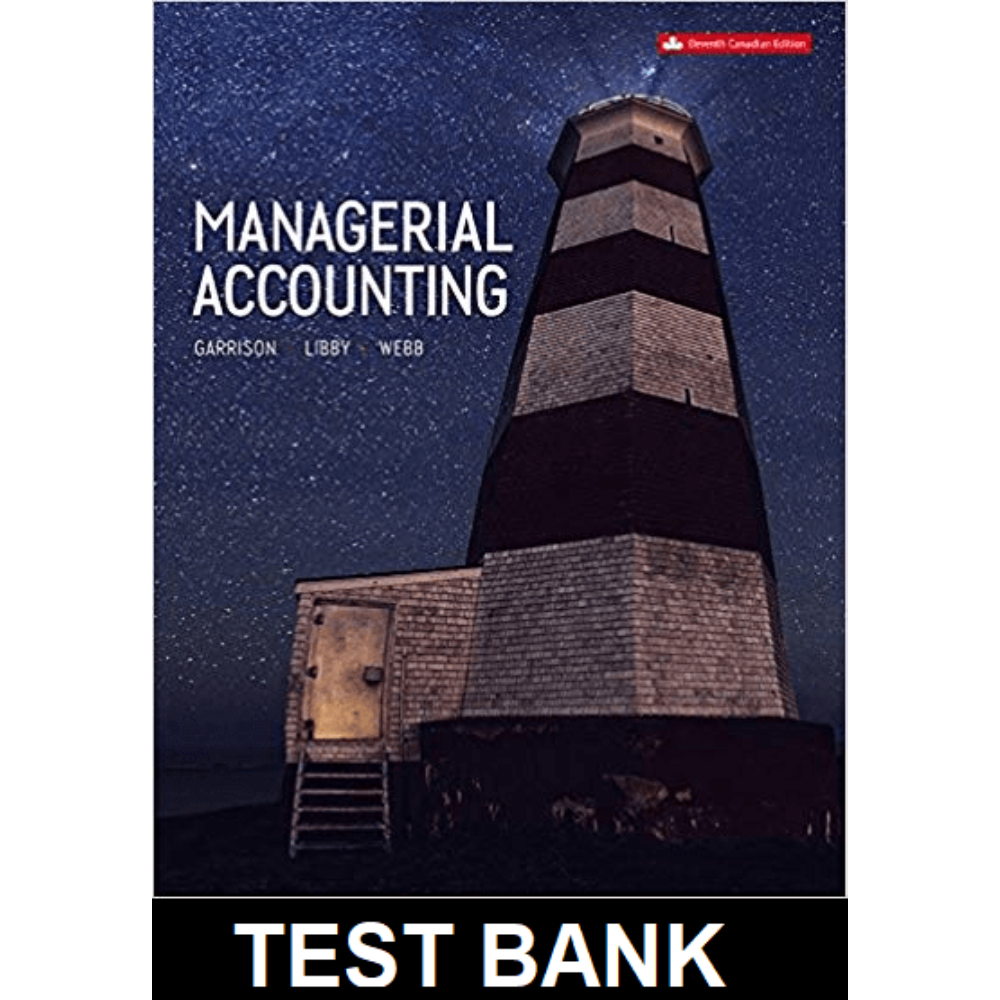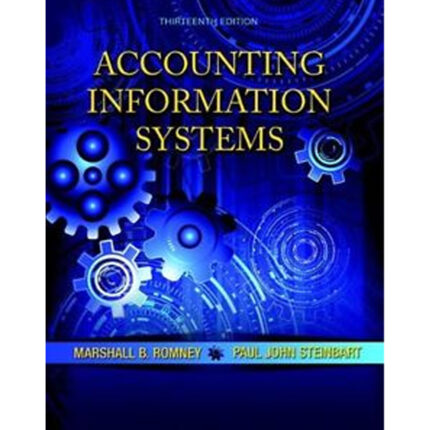Managerial Accounting 11th Canadian Edition By Garrison – Test Bank
Chapter 11
Reporting for Control
Multiple Choice Questions
1. Which of the following is the numerator in the calculation of the turnover component of ROI?
A. Invested capital.
B. Total assets.
C. Operating income.
D. Sales.
- What would be a good example of a common cost that normally could NOT be assigned to products on a segmented income statement except on an arbitrary basis?
A.Product advertising outlays.
B. Salary of a corporation president.
C. Direct materials.
D. The product manager’s salary.
- All other things being equal, which of the following is a consequence of an increase in a division’s traceable fixed expenses?
A.The division’s contribution margin ratio will decrease.
B. The division’s segment margin ratio will remain the same.
C. The division’s segment margin will decrease.
D. The overall company operating income will remain the same.
- Lyons Company consists of two divisions: A and B. Lyons Company reported a contribution margin of $50,000 for Division A, and had a contribution margin ratio of 30% in Division B, when sales in Division B were $200,000. Operating income for the company was $25,000 and traceable fixed expenses were $40,000. What were Lyons Company’s common fixed expenses?
A.$40,000.
B. $45,000.
C. $70,000.
D. $85,000.
50,000 + 200,000 *.30 – 40,000 – 25,000 = $45,000.
- More Company has two divisions: L and M. During July, the contribution margin in Division L was $60,000. The contribution margin ratio in Division M was 40%, and its sales were $250,000. Division M’s segment margin was $60,000. The common fixed expenses were $50,000, and the company operating income was $20,000. What was the segment margin for Division L?
A.$0.
B. $10,000.
C. $50,000.
D. $60,000.
Total SM = 20,000 + 50,000 = 70,000. L’s SM = 70,000 – 60,000 = $10,000.
- During April, Division D of Carney Company had a segment margin ratio of 15%, a variable expense ratio of 60% of sales, and traceable fixed expenses of $15,000. Division D’s sales were closest to which of the following?
A.$22,500.
B. $33,333.
C. $60,000.
D. $100,000.
using equation S -.6 S – 15,000 =.15S. Sales = 15,000/(1 -.6 -.15) = $60,000.
- Johnson Company operates two plants: Plant A and Plant B. Johnson Company reported for the year just ended a contribution margin of $50,000 for Plant A. Plant B had sales of $200,000 and a contribution margin ratio of 30%. Net operating income for the company was $20,000 and traceable fixed costs for the two plants totalled $50,000. What were Johnson Company’s common fixed costs for last year?
A.$40,000.
B. $50,000.
C. $70,000.
D. $90,000.
50,000 + 200,000 *.30 – 50,000 – 20,000 = $40,000.
Ieso Company has two stores: J and K. During November, Ieso Company reported operating income of $30,000 and sales of $450,000. The contribution margin in Store J was $100,000, or 40% of sales. The segment margin in Store K was $30,000, or 15% of sales. Traceable fixed expenses were $60,000 in Store J, and $40,000 in Store K.
- What were the total sales in Store J?
A.$100,000.
B. $150,000.
C. $250,000.
D. $400,000.
100,000/.40 = $250,000.
- What were the total variable expenses in Store K?
A.$70,000.
B. $110,000.
C. $130,000.
D. $200,000.
CM for K = 30,000 + 40,000 = $70,000. Sales K = 450,000 – 250,000 = 200,000. VC for K = 200,000 – 70,000 = $130,000.
- What were Ieso Company’s total fixed expenses for the year?
A.$40,000.
B. $100,000.
C. $140,000.
D. $170,000.
Total SM = 30,000 + 40,000 = 70,000 so, Common FC = 70,000 – 30,000 = 40,000. Total FC = 40,000 + 60,000 + 40,000 = $140,000.













Reviews
There are no reviews yet.